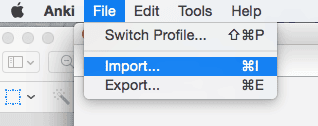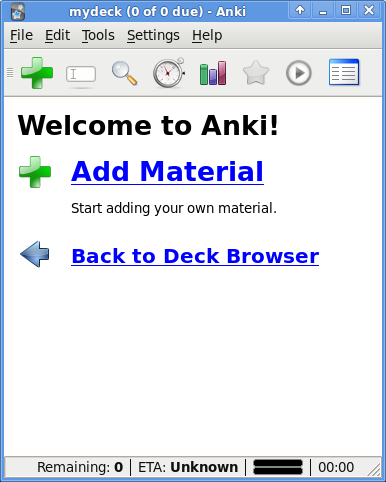

Spaces are used to separate tags, so if you want to use a phrase instead of a single word you will need to remove the space. – “Tags” – Tags are optional and are single words that allow you to go back and sort your flashcards by topic or chapter.Again, this is similar to what you would write on the “back” of a conventional flashcard. – “Back” – This is where you type the “answer” to whatever the “front” of your Anki card was prompting.This is similar to what you would write on the “front” of a conventional flashcard. – “Front” – Here you can type whatever you’d like to appear as the prompt for your flashcard.– “Deck” – This field is fairly straightforward but important to pay attention to when changing this field, you will be changing which deck the flashcard belongs to, so make sure they’re going in the right place!.The “basic” card type is most similar to a conventional flashcard and is probably the most commonly used.

#Download anki deck with tags ankiapp android
Anki is free to download on computers and Android devices, but the Anki App is $25 for iPhones and iPads.
#Download anki deck with tags ankiapp how to
If you’re not sure how to use Anki, start with the computer version of the application don’t worry, you’ll be able to easily sync the flashcards from your computer to a mobile device for on-the-go practice! You’ll need to download Anki onto your laptop or computer. Anecdotally, there are many success stories on premed forms and from Blueprint MCAT tutoring students who have used Anki to retain important information for their MCAT test prep and beyond. A recent review on the subject, has suggested that spaced practice of content and practice testing have the highest utility of commonly used study strategies (Dunlosky et al., 2013).Īnki’s spaced repetition algorithm addresses both of these components by testing you on specific pieces of information across a range of time. Many generations of educators and psychologists have worked to determine what are the best study strategies based on scientific evidence. Even better, Anki is completely free to use on desktop and Android! What Is the Evidence for Anki’s Effectiveness? These include synchronization across multiple devices, high levels of customization, the ability to embed media such as audio clips, images, and videos into your flashcards, and a large number of add-ons that can further facilitate studying. While the spaced repetition feature is at the core of the Anki flashcard platform, Anki also has other features that make creating and studying flashcards a breeze. These functions give Anki the powerful ability to make highly effective studying possible and set it apart from other flashcard apps. Spaced repetition is based on the spacing effect, which suggests that we learn most efficiently when our learning is spaced over time.Īnki accomplishes both of these by having flashcards only appear for “review” when you are just about to forget their content. Self-testing is a feature inherent in flashcards, such as when you ask yourself to recall content based on a question, phrase, or definition.

As discussed above, the self-testing and spaced repetition components of Anki are what make it a popular MCAT prep tool, especially for reviewing science content on the MCAT. Anki is a powerful tool for the memorization of a variety of things, from a new language learning to physics formulas. What is Abki? It’s more than a simple online flashcard tool. These two strategies are the basis of the Anki flashcard app and help explain why it shines as an MCAT preparation tool.

Self-testing and spaced repetition are two study strategies that are frequently considered to be highly effective. Written By: Madeline Zamzow, Blueprint MCAT Tutorĭue to its complexity, it is important to prep for the MCAT in the most efficient way possible.


 0 kommentar(er)
0 kommentar(er)
